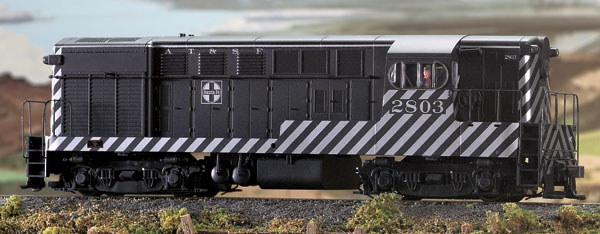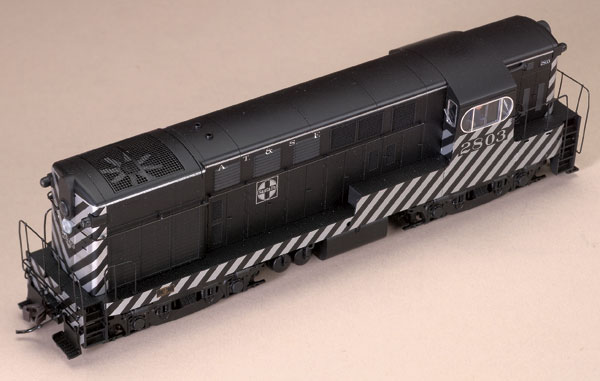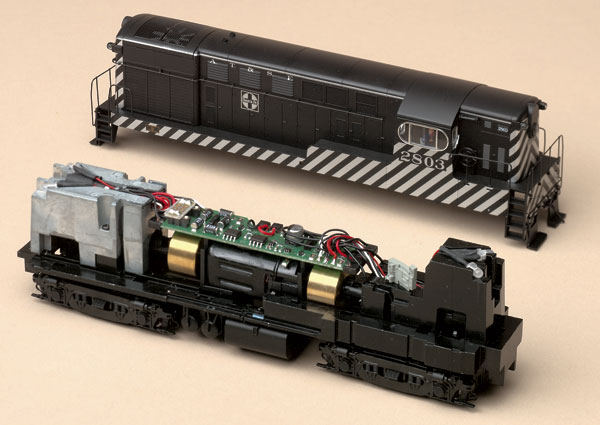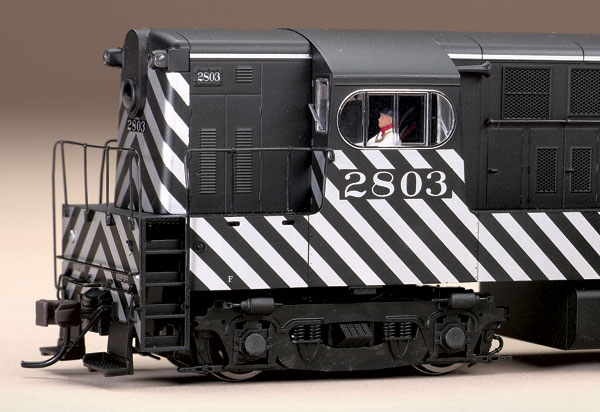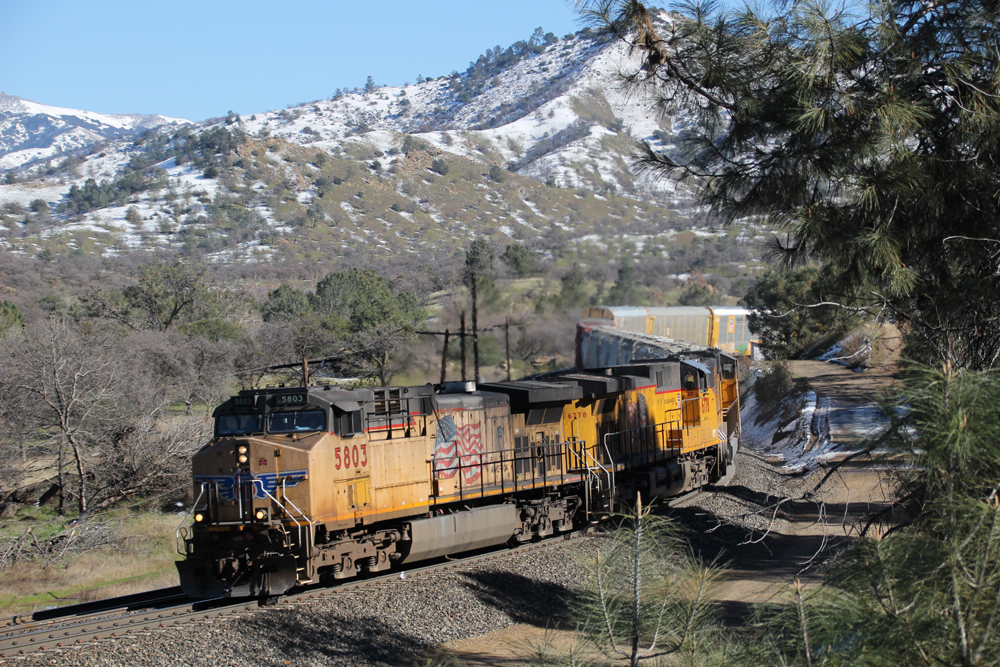Two groups of similar prototype locomotives (which F-M designated as the H-15-44 and H-16-44) have been modeled. The H means the locomotive is a hood unit, the 15 or 16 is the horsepower (1,500 or 1,600), and the 44 indicates 4 motors on 4 axles. The H-15-44 was introduced in 1947, but only 35 were sold to 10 railroads. The more powerful H-16-44 was introduced in 1949 and built through March 1963. Overall, 299 H-16-44s were built for 16 railroads, although the body details were simplified over the years.
An excellent two-sided sheet of exploded isometric drawings shows that the locomotives use a variety of alternate major parts including three hoods; two cabs; two running board, sill, and step assemblies; and two styles of truck sideframes.
Most of these body parts are highly detailed styrene, although the truck sideframes and fine railings are flexible acetal plastic. The see-through pilot steps and grill over the radiator fan are very well done. Clear styrene windows, headlight lenses, and classification lights are also provided.
Each locomotive has well-detailed sideframes in the style that’s appropriate for its prototype. Some units rode on Association of American Railroads type B road switcher trucks with a straight-bottom equalizer, while others used the F-M C-Liner design with a gently curved bottom equalizer.
Mechanically, these F-Ms follow the design Atlas introduced with its revised GP40 in October 2000. It has a metal frame with a can motor riding above the fuel tank. A pair of turned-brass flywheels are mounted on the motor shaft, along with universals which drive both trucks. All eight wheels are driven and help pick up electrical current.
The Atlas dual-mode decoders conform to the National Model Railroad Association’s DCC standards. They can be programmed for 14-, 28-, or 128-step speed control (14 steps is the default setting). Each decoder will handle 1A of continuous motor current and has a pair of 200ma.-capacity outputs to operate other functions. The decoders support advanced consist control, extended addressing, and all forms of programming as specified in NMRA Recommended Practice 9.2.3.
The classification lights on the corners of these models change between red and green with the direction of movement. Having a red indication to the rear is fine if the locomotive is running light (by itself) or as a helper, but green lights displayed on the front of a locomotive indicate there’s a second section of a scheduled train following. A better combination would be white (for an extra or unscheduled train) or green or off as these are the class light colors required by railroad operating rules. These class lights can be turned off when the model is in the DCC mode.
Our sample H-16-44 started moving on 2.6 volts and ran smoothly at 6.4 scale mph. Its top speed of 80 mph is close to the prototype’s maximum 85 mph with passenger gearing. The drawbar pull is equivalent to 40 free-rolling freight cars on straight and level track.
Accumate magnetic knuckle couplers are factory-installed and mounted at the proper height. The RP25-contour wheelsets match the National Model Railroad Association standards gauge.
Our H-16-44 came decorated in the Atchison, Topeka & Santa Fe’s 1950s zebra-stripe scheme. The paint is smoothly applied, and all of the striping is sharply defined. The lettering includes numbers on the number boards.
Price: $149.95 with decoder
Manufacturer:
Atlas Model Railroad Co. Inc.
378 Florence Ave.
Hillside, NJ 07205-1102
Description:
Plastic and metal ready-to-run locomotives
Road names:
- H15-44 (early Loewy body and cab with body-mounted handrails):
Central of Georgia; Central RR of New Jersey; Chicago, Rock Island & Pacific; Denver & Rio Grande Western; Kansas City Southern; Union Pacific; and undecorated - H16-44 (early Loewy body and cab with sill-mounted handrails):
Atchison, Topeka & Santa Fe (black and silver); New York Central; New York, New Haven & Hartford; and undecorated - 16-44 (early body and square-window cab with body-mounted handrails): Pennsylvania, undecorated
- 16-44 (early body and square-window cab with sill-mounted hand-rails): Southern, undecorated
- 16-44 (late body and square-window cab with body-mounted handrails): Delaware, Lackawanna & Western; undecorated
Features
Accumate knuckle couplers
Blackened metal wheels
Manual dual-mode DCC decoder
Directional red and green LED class lamps
Drawbar pull: 2.88 ounces
Dual flywheel drive
Engine weight: 15 ounces
Minimum radius: 18″
Painted crew figures
White LED headlights





